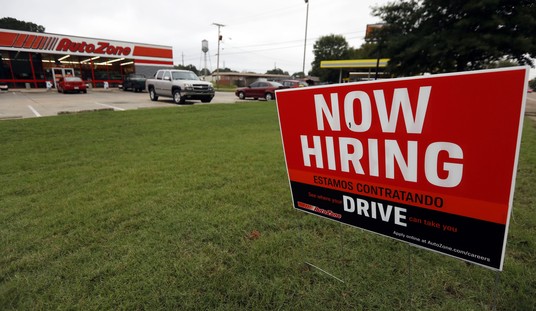I recently finished reading Sean Trende’s excellent book The Lost Majority, which is a must-read for anyone attempting to intelligently discuss its subject: how winning political coalitions are built, maintained and undone in the modern American two-party system. Trende covers a range of topics. At the level of political science theory, he dismantles the theory of periodic realigning elections. In his historical analysis, he may surprise you by arguing that the most enduring coalition of the past century was assembled not by McKinley, FDR, or Reagan but Dwight Eisenhower. Looking to the recent past and future, he convincingly demonstrates that Obama’s 2008 coalition was always more fragile than Democrats at the time believed, and that there remain obstacles to the John Judis/Ruy Teixeira theory of an Emerging Democratic Majority. Trende’s major point is that all such predictions of enduring partisan majorities (he cites many dating back over the past century and a half) ignore the fact that political coalitions inevitably draw together factions with different interests and ideologies, and frictions within those coalitions inevitably offer opportunities for the other party to regain support.
But one of the historical narratives that Trende covers in depth is of particular interest because it remains a crucial part of partisan mythology today: the enduring myth of the Southern Strategy. On the occasion of Mitt Romney’s address to the NAACP, it is worth revisiting that myth today.
Background: The Civil Rights Movement
First, a little background. Broadly speaking, the African-American civil rights movement has gone through five basic historical stages:
-Stage One, running roughly from the 1787 enactment of the Northwest Ordinance to the 1865 enactment of the Thirteenth Amendment, was the long, bloody struggle to contain and ultimately abolish slavery. The two-party system ultimately aligned the Democrats as the defenders of slavery and secession, while the Republican Party was founded as an antislavery party, and the election of a Republican president triggered the Civil War.
-Stage Two, running until 1876 and highlighted by the passage of the Fourteenth and Fifteenth Amendments and several early civil rights laws, was Reconstruction, which sought to give freed blacks political suffrage and legal equality while dealing with the aftermath of nearly half the country engaging in armed rebellion against the United States. During this period, the “Radical Republicans” of the North and West pressed for more aggressive reconstruction measures, and freed blacks aligned with the GOP, while white Southerners remained the core of the decimated Democratic Party.
-Stage Three, which ran from the deal resolving the contested 1876 election (Democrats accepted Republican Rutherford B. Hayes as the winner in exchange for an end to Reconstruction) through the presidency of Franklin Roosevelt, was the age of Jim Crow: while African-Americans made legal and economic progress on a few fronts, the overwhelming trend (especially in the South) was one of black disenfranchisement, segregation, and oppressive and terroristic practices ranging from lynchings to Klu Klux Klan activity. The Supreme Court during this period essentially rewrote the Fourteenth Amendment to eviscerate the Privileges & Immunities Clause and the Equal Protection Clause (the latter has recovered; the former remains crippled).
For most of this period, the “Solid South” was regarded as reliably Democratic as well as poor, rural and backward. Black voters – where they were permitted to vote at all – began abandoning the GOP for the Democrats in large numbers in the 1930s. Democrats, in thrall to white Southern support, were more or less enthusiastically united in their support for Jim Crow and resistant to even mild civil rights measures like anti-lynching bills. Segregation was formally introduced in the Army by Woodrow Wilson. Republicans, for their part, remained committed in theory to the ideals of Lincoln, but in practice often followed what Trende describes as the Theodore Roosevelt strategy of accommodating Southern recalcitrance in the hopes that Southern whites would give the GOP a hearing. During the time of Roosevelt and Taft, this strategy was unavailing with white Southerners, but the party’s abandonment of any real civil rights agenda set the stage for the loss of its black support between 1928 and 1936.
-Stage Four, running roughly from 1946-65, was the fight for legal equality and the end to Jim Crow and disenfranchisement: desegregation of the armed forces and integration of Major League Baseball in the 1940s, Brown v Board of Education and Rosa Parks in the 1950s, passage of the 24th Amendment banning poll taxes (passed by Congress in 1962, ratified in 1964) and the various landmark civil rights and voting rights bills passed in 1964-65.
The rearguard opposition to civil rights was loud and almost entirely Southern and Democratic; as Kevin Williamson notes, in the 1950s, Southern Democrats in the Senate played what amounted to a good-cop/bad-cop strategy, with Strom Thurmond leading noisy filibusters of civil rights legislation and Lyndon Johnson promising liberal Northern Democrats he could get past the filibusters if the bills were watered down to the point of toothlessness.
The partisan politics of civil rights was complex. Southern Democrats twice bolted the party in tight presidential elections, with Thurmond running in 1948 and George Wallace in 1968, while Northern and Western Democrats generally supported civil rights. Republicans, mostly “liberals” from the North and West, were also mostly supportive (I put “liberals” in quotes here because the liberals on civil rights included a fair number of people like Illinois Congressman Don Rumsfeld who were not liberals by any measure on other issues). As a result, major civil rights bills in the 1950s and 60s generally depended more on Republican than Democratic support in Congress. Conservatives in the GOP and in magazines like National Review were split at the time – few lent their support to the Thurmond/Wallace/Bull Connor faction, which was almost exclusively the province of the Democrats, but some objected on other grounds to the pace and methods used to push civil rights, most famously Barry Goldwater’s opposition to the Civil Rights Act of 1964 on constitutional grounds (Goldwater had supported other civil rights measures and would again). But those were disagreements about tactics, not outcomes.
Today, the American electorate and political system is all but unanimous in support of the measures taken during Stage One, Two and Four; the old Dixiecrat resistance is thoroughly discredited. Most conservatives today want no part of the objections raised by Goldwater and his allies at the time (although some of their systemic concerns about the slippery slopes created during that era have proven prophetic in other areas).
-Stage Five, beginning with the Great Society and the Nixon-era institution of affirmative action and the 1970s controversies over school busing and ongoing more than four decades later, remains much more enduringly controversial. Few, if any, of the racially charged issues of the past 47 years have had anything to do with legal equality for African-Americans, and after the last gasp of Wallace in 1968, political support for any vestige of Jim Crow vanished. On the GOP side, a number of the old Dixiecrats, led by Thurmond himself, switched parties. Ex-Dixiecrats like Thurmond and Jesse Helms abandoned their prior support for segregation along with the party they had left behind. On the Democratic side, they died out more slowly, with some still holding office into the 1980s, a number of whom (including Wallace) dramatically repented their prior ways. The old Dixiecrats who stayed in the Democratic Party spent the rest of their careers drawing overwhelming support from black voters; most depended on that support for their margins of victory. Meanwhile, Republicans who had supported civil rights throughout the 1960s generally found themselves shut out of that support.
The most dramatic political development of the post-1965 period has been the rise of the GOP and decline of the Democrats among white voters in the South. Which brings us to the mythology of how that happened and what it means to the two parties today.
The Myth
The basic “Southern Strategy” myth, popularized by Kevin Phillips in the early 1970s, goes like this: under LBJ’s leadership, Democrats nobly and self-sacrificingly supported civil rights during Stage Four of the movement, giving an opening to opportunistic Republicans to crack the Democratic Solid South; following the support given by voters in some Deep South states to Goldwater in 1964, Nixon (formerly a supporter of civil rights) developed a “Southern Strategy” to use coded appeals to southern whites, enabling him to win the 1968 election; and everything the GOP has accomplished since 1968 is tainted by a continuous reliance on that same strategy to keep white southerners in the fold.
Like most myths, the Southern Strategy myth has some kernels of truth to it. It’s true that LBJ changed his tune on civil rights in the Oval Office, and did so knowing that this would have costs to the party. This, as Trende notes, is the nature of political coalitions and why they are inherently unstable. It’s true that Nixon, like Republicans as far back as TR, had the dream of adding white Southern support to his coalition, and dedicated a campaign strategy to doing so. And it’s true that the South has, broadly speaking, been far more Republican since the late 60s than it was before.
But the reality is quite different from the myth.
The Real Story of the Un-Solid South
At the center of the Southern Strategy myth is the idea that Republicans used the race card to seduce Democratic voters in the South into leaving their natural partisan home. The truth, as Trende convincingly demonstrates, is the opposite: the growth of GOP support among white Southerners was steady and mostly gradual from 1928 to 2010, and was a natural outgrowth of the fact that white Southerners were ideologically much more compatible with the national Republican agenda and coalition than with the national Democratic agenda and coalition. What retarded the Southern switch from the Democrats to the GOP was a combination of party loyalties dating back to Reconstruction and the Democrats’ use of racial issues. In other words, if you take race out of the picture, it’s likely that white Southerners would have switched parties earlier and in greater numbers. The real “Southern Strategy” was the one pursued by the Democrats, especially under FDR, to keep conservative white Southerners in a liberal party.
You can read shorter versions of Trende’s argument in columns by Trende, Jay Cost (who looks especially at the South’s divergence from the party of organized labor), and Gerard Alexander, as well as more background on the two parties’ civil rights records from Williamson. I will summarize.
Basically, Trende follows three lines of data. The first thing he does is look at voting patterns, not just bottom-line statewide Electoral College figures but the actual trends in the two-party popular presidential vote as well as downticket voting behavior by state, Congressional district and state gubernatorial and legislative elections. What he shows, on the one hand, is that the South was, from 1928 on, not as solidly Democratic as portrayed (and there were pockets of the South that had always been GOP-friendly, especially in Tennessee, Virginia and Texas). Some of that in the case of 1928 can be attributed to Southern Protestant resistance to voting for the Catholic Al Smith, but the fortunes of the GOP began to pick up significantly as conservative anti-union Southerners soured on the New Deal after 1936. And that accelerated under Eisenhower. Trende:
The Great Depression set Republicans back, but post-1948, Republicans began seriously working to pick the Democrats’ lock on the South. In 1952, Eisenhower carried three Southern states. In 1956, he carried five, including deep Southern states like Louisiana…. Eisenhower came 15,000 votes in North Carolina from carrying a majority of the Southern states; he managed to carry a majority of the South’s popular vote. And the days of Republicans receiving 5 percent of the vote in Deep Southern states were by then over. Eisenhower received at least one-third of the vote in every state in the Old Confederacy.
The same is true for Nixon in 1960, when the pro-Civil Rights Nixon, who…was representing an Administration that enforced Brown v. Board, carried Virginia, Tennessee and Florida. Texas, North Carolina and South Carolina were all decided by five points or less. Without LBJ as the Veep candidate, Nixon may well have carried those states – indeed Republicans picked up their first elected Southern Senate seat in history in a 1960 special election shortly after the election.
In 1964, Goldwater did break through in the Deep South. But compared to the preceding decade, that isn’t all that surprising. Goldwater ran roughly even with Nixon in Arkansas, Florida, North Carolina, and Virginia. He ran about ten points better in South Carolina, Tennessee and Texas. On average, he ran two points ahead of Nixon. Compare this with 1952, when Eisenhower ran 22 points ahead of Dewey in the South.
The second trendline in the data is ideology. To accept the Southern Strategy myth that race is the dominant reason why white Southerners would find a home in the GOP, you have to ignore the role of (among other issues) economics, religion, and foreign policy/national security. Which is ridiculous; it is obviously not the case that the average white Southern voter would have been in perfect sync with George McGovern, Ted Kennedy and Michael Dukakis on those issues if not for the Magic Race Card. Trende supports this point in a variety of ways through legislative voting data on how elected Southern Democrats increasingly parted company from their party beginning in 1937-38 and running through their effective extinction in 2010. The process fed itself – the more white Southerners left the Democratic Party, the more liberal on all these issues the national party became, and the more it drove additional white Southerners to give the GOP a look.
The third trendline is demographic: Southern voters in successive generations tended to vote more Republican as their economic circumstances came to more closely resemble those of Republicans outside the South. As the South became less poor, less rural, and more suburban, it elected more Republicans.
Just as the South was less solidly Democratic than thought before 1968, it was less immediately solidly Republican after that. Southern candidates like Jimmy Carter in 1976 and Bill Clinton in 1992 made significant inroads in their home region, and it took many years for Republican strength at the presidential level to seep downticket. Cost:
[W]hile the Deep South voted for Goldwater in 1964, the Democrats still carried a whopping 90 of 106 congressional districts in Dixie in 1964. In fact, the big breakthrough for the GOP in the House did not come until 1994. Prior to that, the Democrats could count on better than 3/5ths of the Southern congressional districts.
As late as 2010, there were still states like Alabama and North Carolina that were voting in their first Republican legislative majorities since Reconstruction – something that would have happened overnight in the late 60s if the partisan realignment had been driven by lockstep white voting loyalties on racial lines.
The actual 1960s-era Republican record on civil rights is also not what is painted by the myth. When Thurmond met with Nixon to pledge his support in 1968, he asked for reassurance from Nixon on one issue: missile defense. Williamson on Goldwater:
Goldwater had supported the 1957 and 1960 acts but believed that Title II and Title VII of the 1964 bill were unconstitutional, based in part on a 75-page brief from Robert Bork. But far from extending a welcoming hand to southern segregationists, he named as his running mate a New York representative, William E. Miller, who had been the co-author of Republican civil-rights legislation in the 1950s. The Republican platform in 1964 was hardly catnip for Klansmen: It spoke of the Johnson administration’s failure to help further the “just aspirations of the minority groups” and blasted the president for his refusal “to apply Republican-initiated retraining programs where most needed, particularly where they could afford new economic opportunities to Negro citizens.” Other planks in the platform included: “improvements of civil rights statutes adequate to changing needs of our times; such additional administrative or legislative actions as may be required to end the denial, for whatever unlawful reason, of the right to vote; continued opposition to discrimination based on race, creed, national origin or sex.” And Goldwater’s fellow Republicans ran on a 1964 platform demanding “full implementation and faithful execution of the Civil Rights Act of 1964, and all other civil rights statutes, to assure equal rights and opportunities guaranteed by the Constitution to every citizen.” Some dog whistle.
Alexander, on Nixon:
Nixon made more symbolic than substantive accommodations to white Southerners. He enforced the Civil Rights Act and extended the Voting Rights Act. On school desegregation, he had to be prodded by the courts in some ways but went further than them in others: He supervised a desegregation of Deep South schools that had eluded his predecessors and then denied tax-exempt status to many private “desegregation academies” to which white Southerners tried to flee. Nixon also institutionalized affirmative action and set-asides for minorities in federal contracting.
The Democrats and Race
Meanwhile, the Democratic record is hardly anything to be proud of. The first modern progressive Democrat, Woodrow Wilson, was a horrible racist who did everything in his power to strengthen Jim Crow in the federal government and leave it alone in the states despite his usual preference for expanding federal power. Trende follows how FDR used more subtle racial appeals to hold white Southerners in his coalition while using economic issues to solidify the transition of black voters to loyal Democrats (Trende notes the generational element: older black voters who remembered Reconstruction stayed mostly loyal to the GOP, but died off). But in time, the natural instability of coalition politics took over: as black voters became the Democrats’ most loyal base and were registered to vote in increasing numbers, Democratic politicians came to change their tune, with extreme examples like Wallace and LBJ. Williamson observes the turn from the LBJ of the 1950s:
“These Negroes, they’re getting pretty uppity these days, and that’s a problem for us, since they’ve got something now they never had before: the political pull to back up their uppityness. Now we’ve got to do something about this – we’ve got to give them a little something, just enough to quiet them down, not enough to make a difference.”
to the LBJ of 1965:
President Johnson … informed skeptical southern governors that his plan for the Great Society was “to have them n___ers voting Democratic for the next two hundred years.”
Fundamentally, the Democratic Party’s approach to racial and ethnic politics has not really changed all that much since the 1830s; it’s just calibrated to a different audience.
Print The Legend
The Southern Strategy myth is too well-entrenched by now, and too essential to the Democrats’ narrative and self-image, to expect that any level of contact with the facts can dispel it. But like a number of the myths about electoral politics dispelled in Trende’s book, it’s worth your time to learn those facts.













Join the conversation as a VIP Member